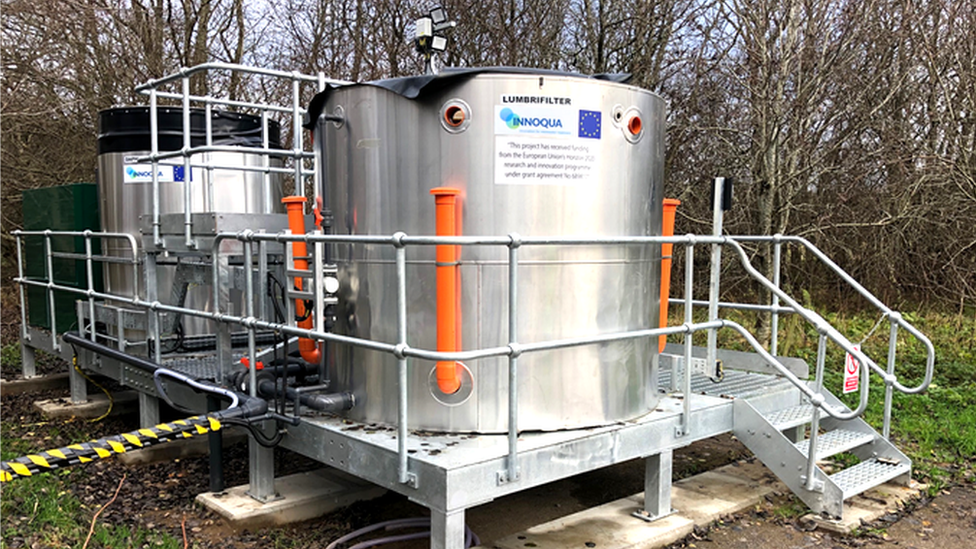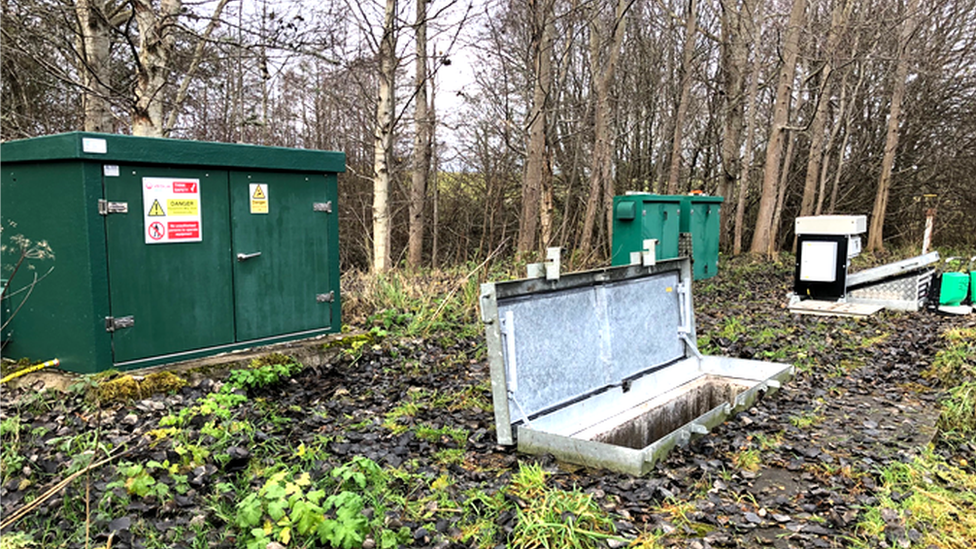Worms and fleas used in green water treatment
- Published

The tanks have been installed at an existing treatment works site
An emissions-free technique for treating sewage using bugs is being trialled in a small Highland community.
Earthworms and water fleas are being added to the waste water at Littlemill near Nairn.
Two tanks have been installed at an existing treatment works to pilot the technique which aims to reduce the environmental impact from sewage.
It is part of an EU-funded project to help improve access to clean water across the world.

Earthworms will be used in the pilot scheme
During the 12-month trial, the water will still be treated using conventional methods once it has passed through the new machinery.
The clean water will then be released into local rivers.

The water will still be treated using conventional methods during the trial
Anna Baran from Scottish Water said the project has the potential to make a significant impact on the way waste water is dealt with around the world.
She said: "The technology we are trialling basically replicates a process which happens naturally within soil, but we are using it to clean waste water.
"The first stage of treatment involves a tank filled with earthworms. The worms eat the larger particles of organic matter in the waste water, before it is added to a second tank containing water fleas and microalgae which remove the finer bits of organic matter.
"At this stage, the water should be in a condition that would allow it to be returned back to the natural environment."

The aim is to provide an ecological waste water treatment method which can be used in small rural communities.
If the technique proves successful, it could be used in developing countries where access to clean water is limited.
It is estimated that 2.5 billion people around the planet have no sanitation facilities.
The system is being trialled in 10 other countries but Scotland is the most northerly.
Scientists are particularly keen to learn whether the bugs can survive in colder northern climates.
Littlemill was chosen because of its size, remote location and exposure to the Scottish climate.